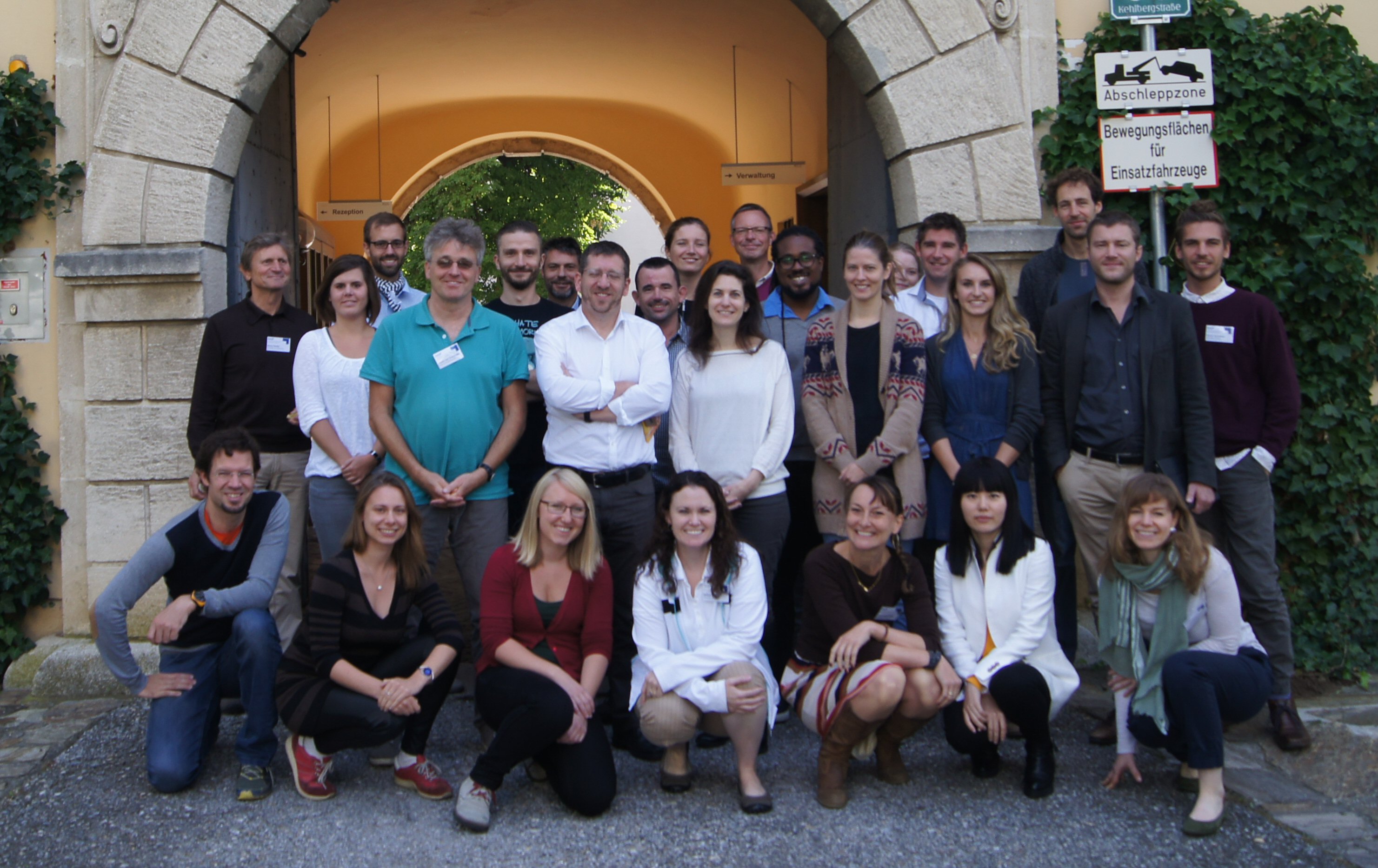Report on Small Group Meeting: Towards a neuroscience for social psychologists
04.11.2015, by Kai Sassenberg in meeting report
September 9-11, 2015 -- Graz, Austria -- Organizers: Gayannée Kedia ( University of Graz, Austria), Lasana Harris (University College London), Lotte van Dillen (University College London, UK), Gert-Jan Lelieveld (University College London, UK)

The St. Martin Castle in Graz, Austria, was the beautiful venue for the research meeting “Towards a neuroscience for social psychologists”: A platform for open-minded and constructive discussions about the potentials and boundaries of social neuroscience.
Knowledge exchange and constructive discussions, these were the aims of the small group meeting in Graz in September 2015. With a group of only 28 participants, consisting of both eminent experts in the field of social and cognitive neuroscience as well as enthusiastic PhD students and post-docs, it was possible to address everyone’s questions about whether, when, and how social psychology can benefit from the use of neuroscientific research methods.
The meeting was structured around four different themes, focusing on both the promises as well as the limitations of social neuroscience: ‘Statistical and methodological approaches to social neuroscience’; ‘Pitfalls of neuroscience methods that particularly affect social neuroscience’; ‘Social neuroscience in applied settings such as neuroeconomics, health, and law’; and ‘How can social psychologists use neuroscience?’. Among the speakers were Susanne Quadflieg, Jennifer Beer, Alan Sanfey, Frank van Overwalle, Bob Spunt, Christoph Eisenegger, and Claus Lamm. Key note speakers were Carsten de Dreu and Klaus Fiedler.
With as much time for inspiring talks as for open dialogues about research practices, it was possible to address these issues from different perspectives. Nevertheless, or perhaps because of this, it remains difficult to generate ‘rules of thumb’ that apply to every social neuroscientific study. An important first step that was, however, unequivocally agreed upon is a good operationalization of one’s concepts, and an experimental design that is as simple as possible. Whereas this may seem obvious, these guidelines are even more important for neuroscience studies, where the risk of unjustifiable reverse inferences is greater than for a typical behavioral study, and where it may be harder to determine what exactly one is manipulating. Another good practice that was suggested in relation to the above issues, is that besides combining different neuroscience measures such as fMRI, hormone samples and eyetracking, it is also wise to combine neuroscience measures with behavioral indices where possible, to obtain a good (cross) validation of one’s experimental manipulation and dependent measures. Thus discussing several pitfalls and good practices, all participants seemed to agree upon the value and usefulness of social neuroscience. That is, though the existing limitations of the methodologies and what we can infer from findings have to be considered, neuroscience can help us to advance the understanding of social processes. For instance, insights from neuroscience may confirm, disconfirm, or extend behavioral psychosocial models. Moreover, the use of neuroscientific techniques can help to unravel underlying cognitive processes that cannot be assessed on an explicit (conscious) level. Finally, neuroscience measures may operate as manipulation checks when direct self-reports may interfere with the experimental set-up. The use of neuroscience may thus reveal (additional) factors involved in the relation between the social context and behavioral responses.
Taken together, the meeting has been considered a success by both junior and senior participants and will hopefully be continued in the upcoming years. Related to that, a business meeting was held to address how social neuroscience can gain (enhanced) visibility within existing cognitive and affective neuroscience societies in Europe.
The three-day meeting was sponsored by the European Association for Social Psychology (EASP) and organized by Gayannée Kedia, Lotte van Dillen, Gert-Jan Lelieveld, and Lasana Harris.
Related content: